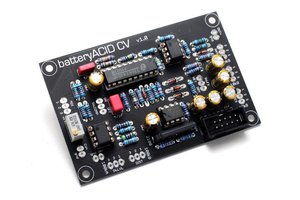1. The challenge
Devices to acquire electrical activities of the heart (ECG) and electrical activities of the muscles (EMG) have usually been used to diagnose diseases and assess treatment effectiveness. Only large institutions and hospitals can afford them since they are expensive, partly due to the lengthy and costly approval process.
The challenge is to develop a low cost (< $50) 1-channel ECG/EMG device with the following features:
- readily interfaced to a computer or mobile device for real-time analysis,
- the analogue front end circuit can be modified,
- the ADC can be reprogrammed
Recent advances in technology have reinvented the devices for fitness and general health purposes. Hence, they do not need to be approved as medical devices for diagnosis or treatment. Given the popularity of mobile technology, they have been packaged with wireless technology, such as Bluetooth, or integrated with mobile devices. One example is Spyder, a wearable device, that not only records and stores ECG but also transmits it to a mobile device via Bluetooth. Another example is AliveCor which is an attachment to an iPhone and transmits ECG to the iPhone via Bluetooth when its pads are placed on the chest. Spyder and AliveCor costs S$500 and US$99, respectively. These devices offer developers none to limited access to the hardware and rely on wireless technology, hence higher price tag.
In addition, Vernier EKG sensor outputs analogue ECG signal that can be interfaced with acquisition devices (e.g. National Instruments acquisition units) or low cost microcontrollers (e.g. Arduino). Vernier EKG costs US$200.
Recently, EMG front-end analogue board, MyoWare, is available from Sparkfun for only US$38. Both devices require a microcontroller and so offers customisation by the user.
Educational and research institutions have also explored low cost ECG/EMG devices [1]–[6]. Some have become commercial products though the price was in the range of hundreds of dollars. However, most of the work have not gone further beyond prototypes into commercial products.
2. The Significance (what problem this challenge will solve)
The key significance is that schools and universities can afford to deploy many ECG/EMG devices in classrooms. In fact, this idea arose from the need to have 50+ EMG/ECG devices for use in biomedical engineering class.
In classrooms, students can learn the physiology of muscle and heart by observing and analysing their own ECG/EMG in real time. It is possible for students to borrow the device for a long term to conduct a project or even buy the device for themselves.
Hobbyists and developers can learn ECG/EMG and develop apps to improve fitness and general health by analysing the ECG/EMG. Novice hobbyists can hack the front end electronics to acquire the brain and eye electrical activities (EEG and EOG respectively). More advanced hobbyists can incorporate a high frequency current source to measure impedance of a part of the body, for example, to estimate the lung volume during breathing and the amount of blood pumped by the heart.
3. Design
The "conventional" design of an electrophysiology device is shown below.

3.1. Design constraints
- Input signals:
- EMG: the amplitude and frequency range from 1 to 30 mV and from 5 to 30 Hz, respectively.
- ECG: the amplitude and frequency range from 0.1 to 10 mV and from 0.5 to 40 Hz, respectively.
- Sampling rate: 10 x max frequency of the input signal = 400 samples/second.
- Amplifier gain:
- Using a 24-bit ADC with ENOB = 22 bits, the resolution is 5V/(2^22) = 1 uV/LSB
- Hence, no amplifier is needed.
- The ADC must have at least 1 differential input.
- ADC with built-in PGA or ability to add an amplifier
- Current consumption of the isolated circuit: max 100 mA
- Optocoupler with at least 3 channels for clock, input and output data
- Small footprint and low cost
- USB connectivity
| Section | Requirements | Design constraints |
| Analogue front end | Gain = 1 (option for gain > 1) | 3, 5 |
| ADC | Differential... |
 Johnson Thie
Johnson Thie
 Yann Guidon / YGDES
Yann Guidon / YGDES
 engineerkid1
engineerkid1

 Electroniclovers123
Electroniclovers123